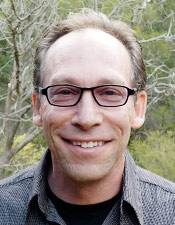 A Thought Leader Series Piece
A Thought Leader Series Piece
By Lawrence M. Krauss
Shortly after the end of World War II, Albert Einstein uttered his now famous warning about the new global danger of nuclear weapons: “Everything has changed, save the way we think.”
In the intervening sixty-odd years, the world has continued to change and become even more dangerous. And still, there is no great evidence that our way of thinking about global catastrophes has evolved to meet the challenges.
I am currently honored to be co-chair of the Board of Sponsors of the Bulletin of the Atomic Scientists – a body created by Albert Einstein and Robert Oppenheimer in 1946 to help warn the public about the dangers of nuclear war.
Perhaps the most visible face of the Bulletin is the “Doomsday Clock,” which was created in 1947 to graphically reflect how close we might be to human-induced apocalypse. The idea of the clock is to display the “number of minutes to midnight,” a point at which we reach apocalypse and time itself no longer matters.
Over the intervening 65 years the clock has been adjusted 20 times, moving as close to two minutes to midnight in 1953 after both the U.S. and Soviet Union first tested thermonuclear devices, and as far as 17 minutes to midnight in 1991 after the U.S. and Soviet Union signed the Strategic Arms Reduction Treaty.
In 2007, however, we at the Bulletin recognized that nuclear war was no longer the only significant global threat facing humanity. The emerging possibility of biologically induced weapons, particularly biological terrorism, led us to consider the possible global dangers associated with these new technologies. Fortunately, our findings on their probability have been mildly encouraging.
While the dangers associated with creating new lethal viruses are significant, the technological sophistication required and the difficulties of wide dispersal reduce the likelihood that these weapons might have a global impact. For the moment, at least, bioterrorism is a subdominant threat.
At the same time, a new global threat has clearly arisen – climate change. While its impact might be less immediate than that of a nuclear conflagration and its harmful effects difficult to quantify at present, human-induced climate change has emerged as one of the greatest global challenges confronting humanity’s outmoded mindset. Nevertheless, attempts to address this challenge have not been encouraging.
Two factors play significant roles. First is the issue of national self-interest. Due to historic rivalries and local economic pressures, most nations are not eager to make sacrifices that may largely benefit those outside their borders. Even countries wanting to limit greenhouse gas emissions face the reality that acting now, while other industrialized countries do not, could put them at a competitive disadvantage in the near term. We are a long way from developing a political framework that allows countries to play well together globally.
Second, at least in the U.S., is the issue of money and its influence on policy. During the 2008 presidential election, climate change was a hot political issue. During the 2012 campaign it has all but disappeared from view. Instead, opponents of climate change policies have followed a strategy of strict denial.
How the campaign to discredit climate change was won in the U.S. over the past four years will no doubt be the subject of many future studies, but one thing is obvious. Money for disinformation altered the national debate. Significantly, this disinformation effort was bankrolled by wealthy conservatives and lobby groups working for industries that are responsible for much of our carbon emissions.
The hard result is that the amount spent each year in this country to discredit climate change science exceeds the entire budget of the Intergovernmental Panel on Climate Change – the scientific body established to address its effects. Faced with such a daunting financial disparity, it is not hard to see why science is losing out.
Taking note of these new challenges as well as exacerbations of existing ones, with nuclear weapons still representing the most urgent pressing danger facing humanity, the Bulletin in January 2012 decided to turn the Doomsday Clock forward one minute. It now stands at five minutes to midnight. The actual value, however, may not be as important as the trend toward increasing danger. From what we observe, new global thinking to address new global challenges remains absent at the highest levels of international governance.
As a cosmologist who thinks about the truly long term future of the universe, I am fond of saying that the universe is the way it is, whether we like it or not. But when it comes to our own future in the next century on this planet, we have more choice. At this moment, it appears we are choosing to live, not in the best of all worlds, but in one where nuclear tensions and climate change continue unabated.
About the author: Lawrence M. Krauss is Foundation Professor in the School of Earth and Space Exploration and director of the Origins Project at ASU. Well known internationally for his work in theoretical physics, he is the only physicist to have received major awards from all three U.S. physics societies: the American Physical Society, the American Institute of Physics, and the American Association of Physics Teachers. He is the author of more than three hundred scientific publications and nine books, including best sellers such as The Physics of Star Trek and, most recently, A Universe from Nothing. Krauss is a commentator and essayist for newspapers such as the New York Times and the Wall Street Journal, has written regular columns for New Scientist and Scientific American magazines, and appears frequently on radio and television. He serves as co-chair of the Board of Sponsors of the Bulletin of the Atomic Scientists and on the Board of Directors of the Federation of American Scientists.